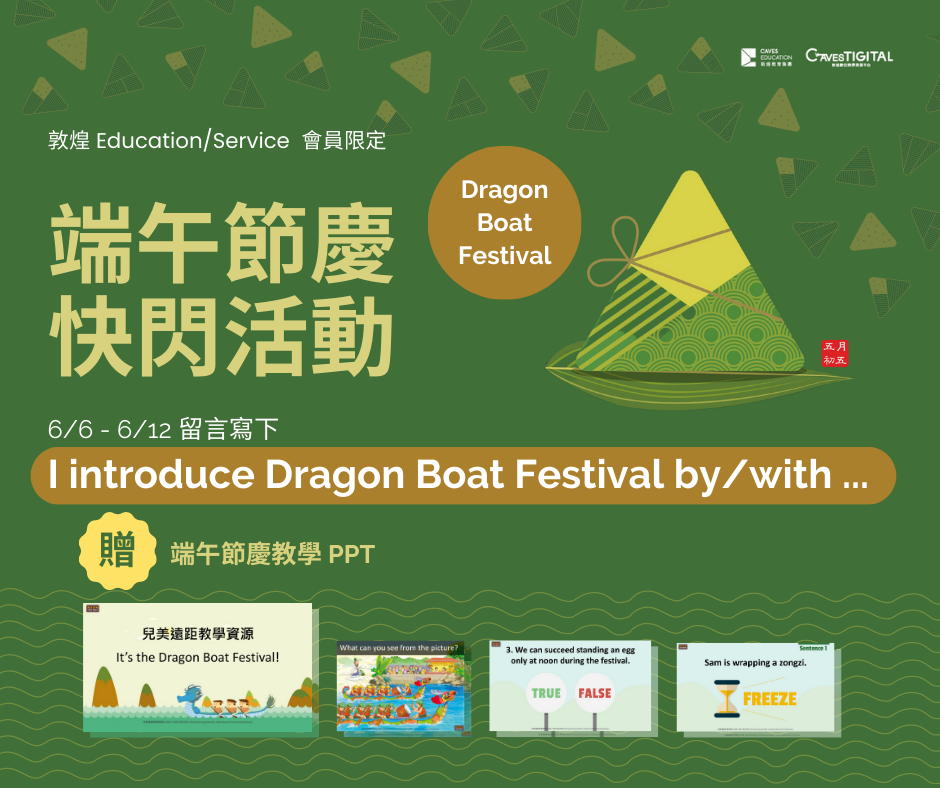人類的生存與自然環境息息相關,所以對於大自然充滿著好奇與敬畏,因而深深地影響著人類的現在和未來 。身為小學跨領域教學的老師,我們的目標在於利用英語作為學習自然科學的媒介,引導學生接近大自然、主動探究自然現象和周遭的事物;幫助學生具備基本科學知識,在日常生活中透過科學方法解決問題,並善用英語做跨領域學習。
主題安排
以外僑學校小一的自然科教學為例,螺旋式的課程設計涵蓋了六大主題:
- Plants and Animals All Around
- Living Together
- About Our Earth
- Measuring Weather
- Investigate Matter
- Energy and Forces
這些主題圍繞著我們賴以生存的地球,帶領學生認識不同的生態環境、氣候、地質、物種,並了解生物有其特殊的本能和構造來順應環境變遷。透過觀察、分類、測量等簡單的科學方法,學習能量及物質變化的概念,從小培養探索未知、思考創新及尊重生命的科學家精神。
課程設計
為建構基礎科學概念,低年級的課程將完整地涵蓋上述六大主題。進入中、高年級後,隨著課程內容逐年加深加廣,可彈性地挑選主題進行具體內容的研究。因應學生的英語能力不同,螺旋式課程由簡入繁的設計可以幫助教師針對 beginners, on-level, advanced 三種不同程度的學生設定差異化的學習目標和相關練習。以 What are living and nonliving things? 為主題的教案設計為例,地球是一個生物和非生物共存的生態系統。在進一步認識這個龐大的生態系統之前,我們需要導入生命的概念和生物的定義。因此 on-level 的學習目標即為認識生命現象,以及如何以生命現象來區別生物與非生物。
一般教案 On-level
Objective:
1) Distinguish between living and nonliving things.
2) Identify what living things need to survive.
Presentation:
1) Have students look at picture cards and ask them to name things pictured. Help students identify each pictured thing as living or nonliving.
2) Explain that living things need air, water and food; nonliving things do not.
3) Explain that living things grow, move, change and reproduce; nonliving things do not.
Vocabulary: living, nonliving, food, water, air, grow, move, change, reproduce
Guided Practice:
1) Distribute the Living and Nonliving worksheet. Have students classify things as living and nonliving.
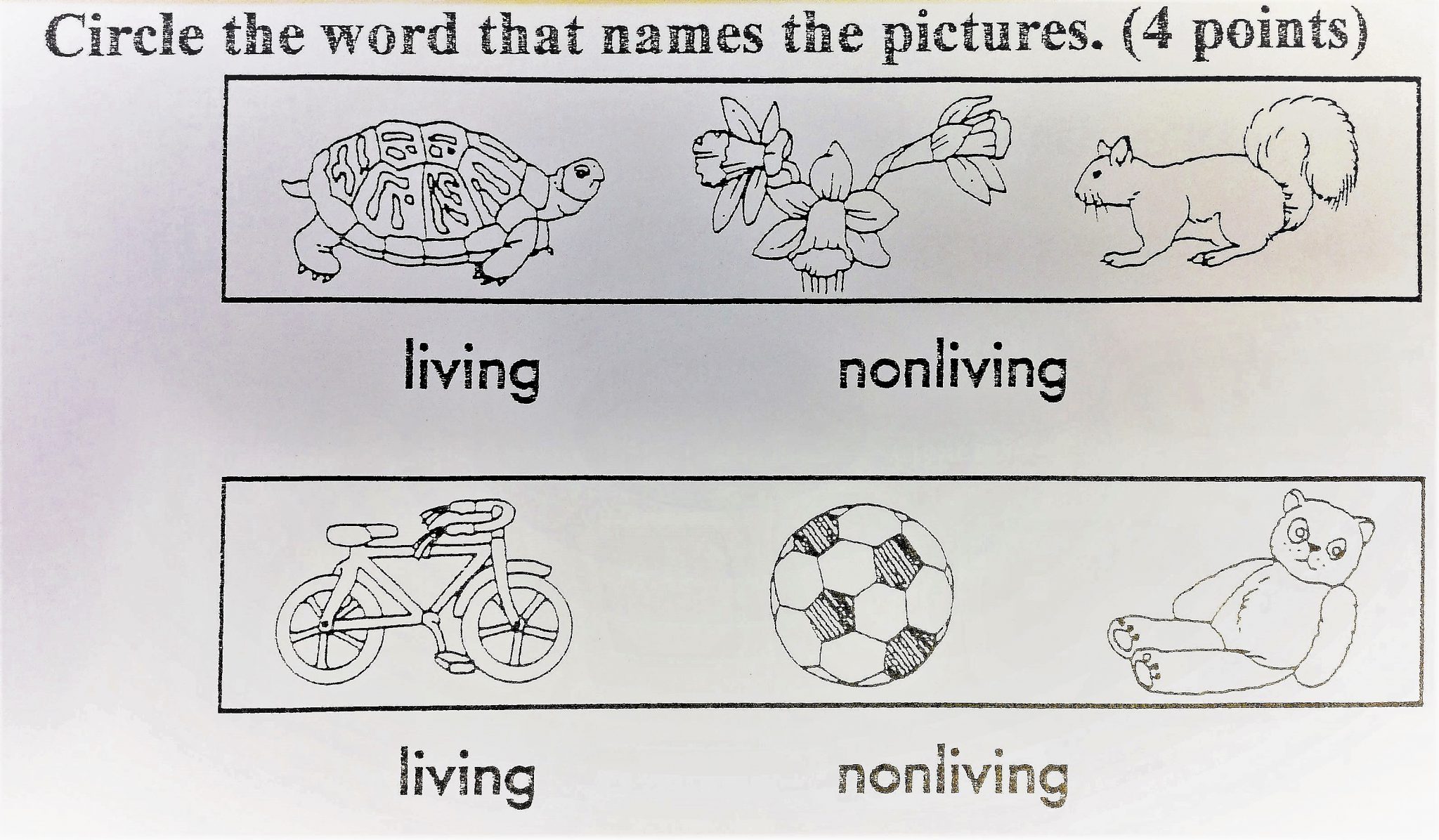
2) Read the story What’s Alive. Ask comprehension questions following the story. e.g. Is the little bird a living thing? Does it need air, food, or water?
3) Watch and listen to the Is it alive? song by Sesame Street on YouTube.
1st part of the lyrics:
Is a rock alive? No, it can’t grow like your brother.
Is a rock alive? No, it can’t eat like your mother.
Rocks can’t eat, rocks can’t grow, rocks can’t breathe,
And that is how you know it’s not alive.
No no no~
4) At the end of the song, ask the students:
- Can you name a living thing from the song?
- Can you name a nonliving thing from the song?
Closure:
1) Review the Living and Nonliving worksheet to ensure that students are able to identify living and nonliving things, and what living things need to survive.
2) Have each student go around the classroom and find a nonliving thing.
Extension/Homework:
Go exploring. Ask students to walk through theirs houses or gardens slowly and look carefully at everything they see. Draw a picture of ten different things and label each thing as living or nonliving.
教學過程中如發現學生學習動機低落、明顯跟不上,可將教學內容簡化、只專注在一個學習目標上。在引導學習的部分選擇更淺顯少量的單字,以及多利用圖片、歌謠、故事或小遊戲幫助學生理解課程重點、減少因語言障礙所帶來的挫折感或甚至中斷學習。
初階教案 Beginners
Objective:
Distinguish between living and nonliving things.
Presentation:
1) Write the words “living” and “nonliving” on the board.
2) Ask students if they are living or nonliving. Ask students if their toys at home are living or nonliving.
3) Explain that living things need air, water and food; nonliving things do not.
4) Explain that living things grow, move, change and reproduce; nonliving things do not.
Vocabulary: living, nonliving
Guided Practice:
1) Distribute the Living and Nonliving worksheet. Have students color all the living things.
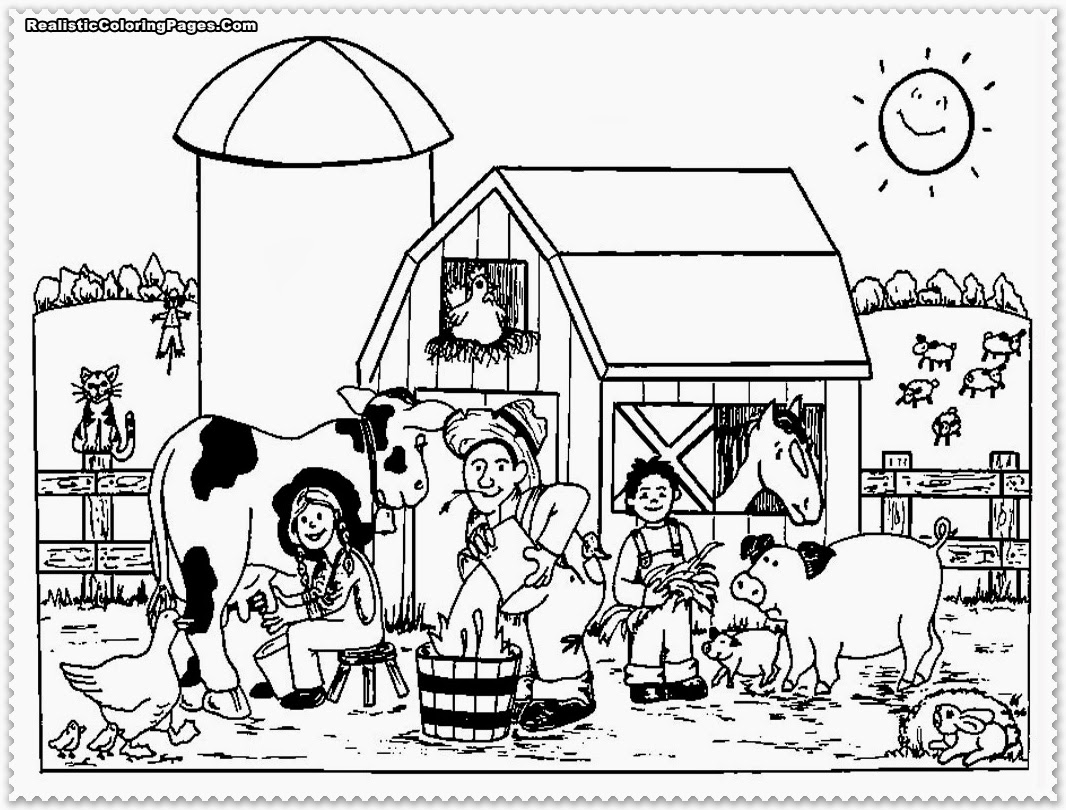
(圖片出處 http://emale.co/farm-colouring-pages-free-printables.html )
2) Place two bags labelled as either “living “or “nonliving” on the ground, and present the students with different kinds of living and nonliving things. e.g. an apple, a flower, a teddy bear, a turtle
3) Have each student pick three things and place them in the bag in either the living or the nonliving category.
建議如有進度超前的學生,可增加挑戰性更高的學習目標。在引導練習的部分,增加個人文字閱讀和書寫量,並啟發學生對問題做比較和判斷性思考。
進階教案 Advanced
Additional Objective:
Compare living and nonliving things.
Guided Practice:
1) Write facts you know about living things.
Living Things Comparison | |
A baby needs…. |
|
A puppy needs…. |
|
We both need…. | |
2) Group discussion:
- What do you think a flower would look like if it did not get water and air?
- How could a rock change or move?
- How are the toys, the air, and the pencils the same?
課堂教學
低年級自然科學課程看似淺顯,實際上需要教師做大量的課前準備才能引導學生主動參與學習。教師除了必須對課程內容精熟、能針對不同英語程度的學生設計教案、還要能帶入相關影片、故事、歌謠等,幫助學生將抽象的內容具體化產生形象記憶,再進一步與實際的生活經驗做連結。透過大量觀察與實作,適時地將母語文化與學習主題做比較,還能養成思惟和判斷的能力。以主題 What Lives in a Forest? 為例,除了介紹北美洲的森林和動植物的種類與分佈,也引導學生認識台灣的森林生態。
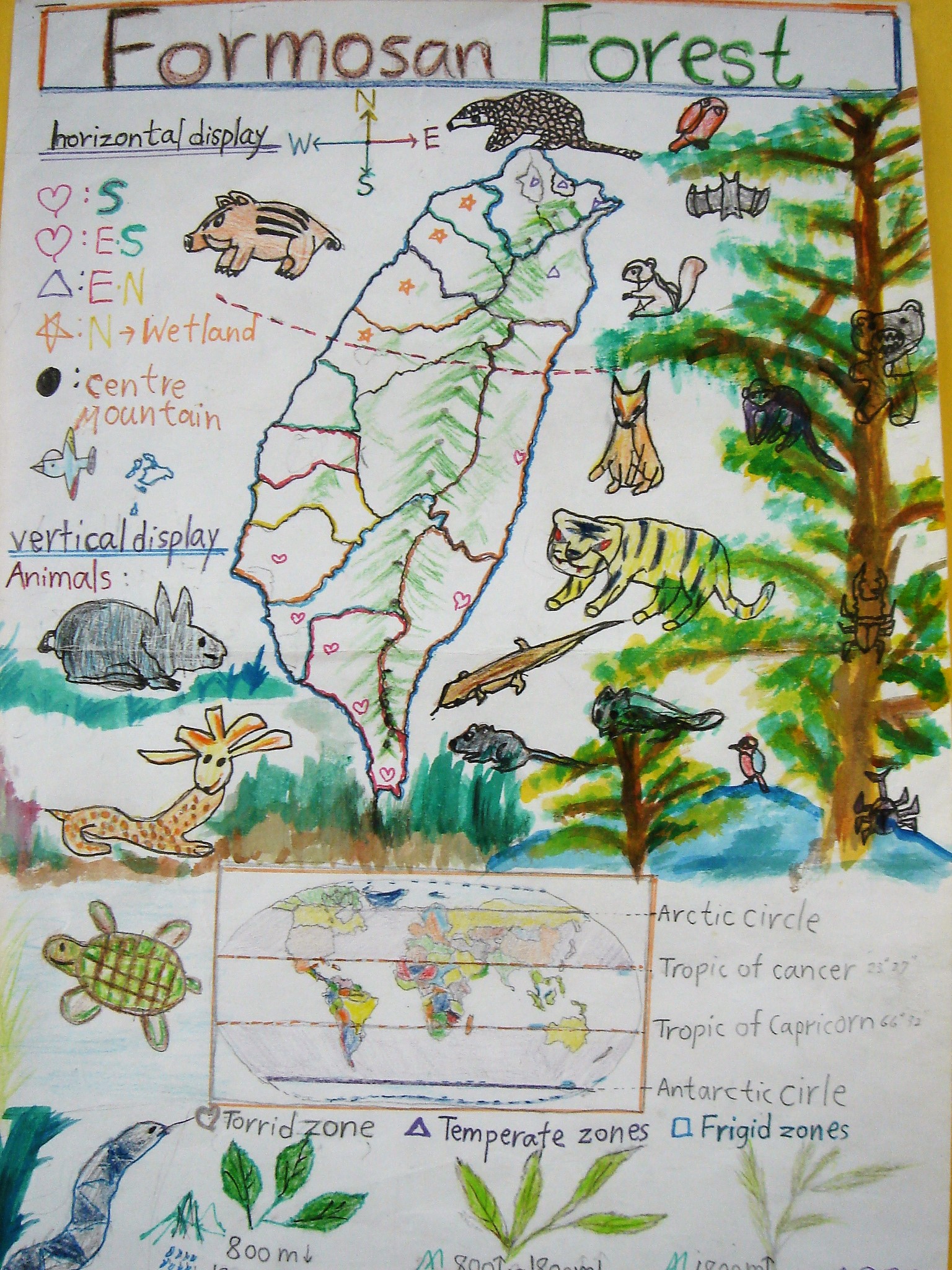
如此一來,自然科學結合跨領域學習的模式可以更人文、更豐富有趣、讓學生更想一探究竟。
課後活動
值得一提的是,一年一度的校內科展是我相當推崇的活動,每個學生可依意願組隊或以個人名義參加。教師僅能針對 project elements 和 example of a good display 做解說,由學生自行決定主題、策劃、進行實驗,並由家長提供必要的協助。科展最實質的意義就在於讓學生從小學習互助合作的精神、勇於發現問題並設法解決。雖然低年級學生的主題多半簡單、實驗的設計和執行也談不上嚴謹,但所有學生從設計參展、進行實驗到在全校師生、家長面前作成果發表都展現出不怕挫折、勇於嘗試的科學精神,這是相當值得鼓勵的。畢竟,天馬行空的創造力是沒有年齡限制的,更是一切改變的起源。
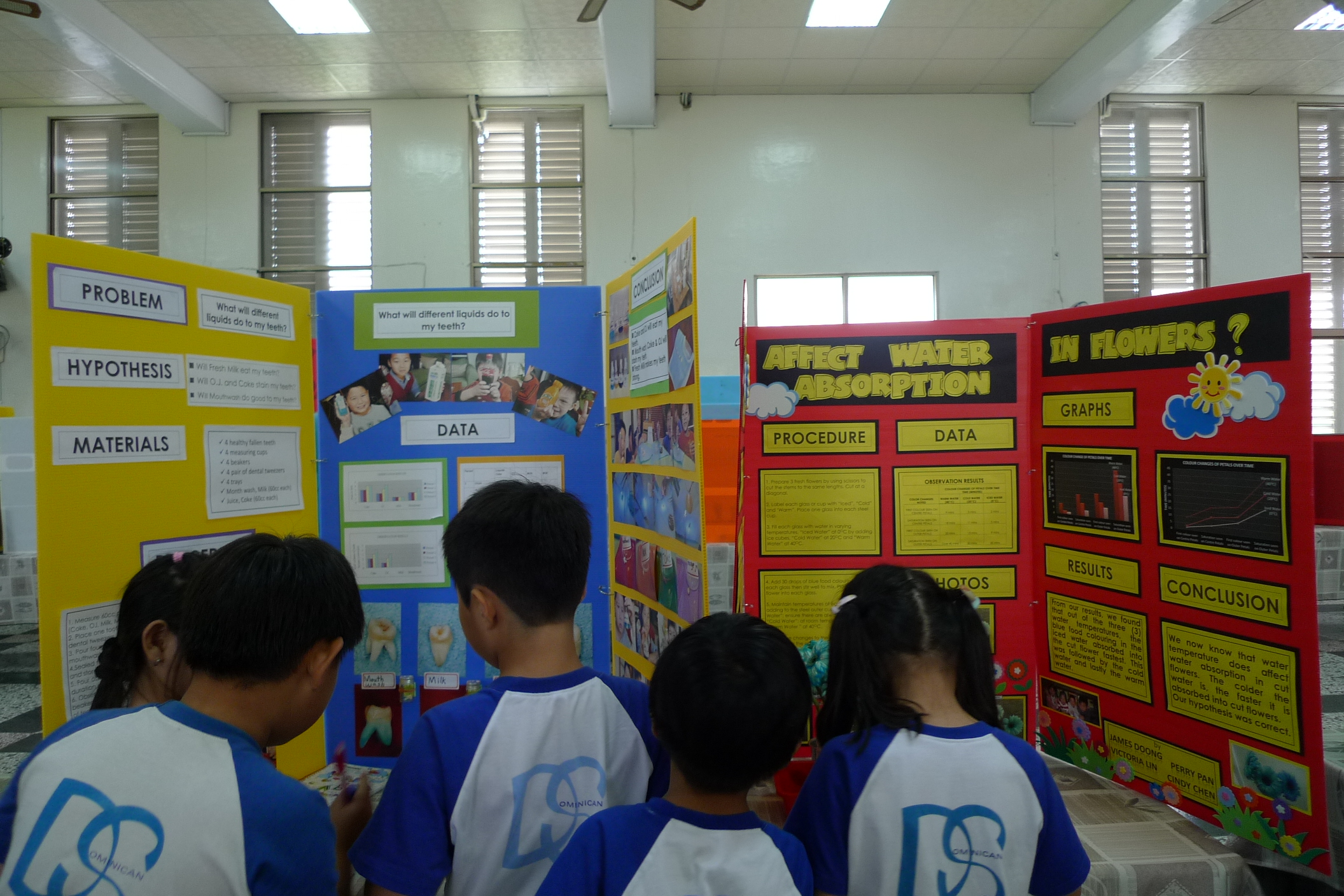
參考書目:
– Vicki Burr (2000) Science – Teacher’s Edition G.1. Harcourt School Publishers
– Kathleen Weidner Zoehfeld (1995) What’s Alive? Harper Collins
更多 Mina 老師好文分享:
作者簡介|Mina
- 資深外僑學校教師



 © All rights reserved, powered by
© All rights reserved, powered by 